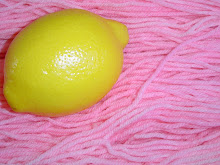Christmas Candy Mischief Socks
I've finished my first sock, the zig zag one, and now I've started the checked one! These are the Mischief Socks using additional contrasting colors for the cuff, toe, and heel. I've knit these socks before, but I feel like I've finally perfected the fit thanks to some project page comments left by other knitters who knit the gnome socks I made at the first of this year. I thought I'd make sure to share this here, in case anyone else is struggling to find the sweet spot for fitting stranded socks.
For the majority of single color sock patterns* using fingering weight yarn, I use around 64 stitches per round and US 1's (2.25mm). If I'm using a fine fingering weight yarn (Hedgehog Fibres Sock, the old Lorna's Laces Sock, Cascade Heritage Sock) I prefer to use about 72 stitches per round and US 0'S (2.00mm). I find these combinations work well for my feet, which are on the narrow side of normal and have high arches. Tweaking the stitches per round either plus or minus by two or three stitches doesn't cause any fit issues for me.
*Heavily cabled and certain lace designs where the increases and decreases are widely spaced are the exceptions to this rule as they have less elasticity in the fabric.
Then I started knitting stranded colorwork socks. I actually used socks to figure out how to knit stranded colorwork because if there are tension issues (and there always are when you're learning), they don't really matter if they're stuffed in a shoe and no one can see them. Stranded colorwork introduces two issues you don't normally have in a single color sock. First, they're less elastic than stockinette stitch is in a single color. That goes to the floats. They need to be long enough not to pull the sock in, but if you make them too long your stitches look sloppy and the sock won't wear well. Secondly, (and again because of the floats on the wrong side) the interior diameter of a stranded colorwork sock is smaller than the outer diameter. The floats make the fabric thicker, thus the inside of the sock isn't as big as it looks from the outside.
So, knowing and understanding these things - my own feet, my generic sock recipe, and how stranded colorwork changes the fabric - I can adjust the fit. Here's what I do:
- Use the 72 stitch (or the closest the pattern has to this) size
- Work the top ribbing in US 0's (2.00mm)
- Switch to US 1's (2.25mm) for the leg colorwork and usually heel flap/heel turn (this gives me extra height for my high instep)
- Switch back to US 0's for the gusset and foot colorwork, as well as the toe
This system gives me a looser lower leg with a fitted heel and foot. It does mean I'm working with several different gauges, but by shifting needle size around I'm able to get a sock that fits my feet properly.
If the sock only has colorwork on the leg, after working the colorwork section I switch back to the US 0's (2.00mm) for the lower leg and keep using them for the rest of the sock. If it still feels a bit big, I can always decrease a few extra stitches in the gusset decreases so the foot doesn't have as many stitches as the leg. (See my Christmas Dudes socks for an example of these things.) Does this change the gauge between the colorwork and the rest of the sock? Yes it does. The colorwork section is slightly larger, but it's also smaller on the inside, so the fit is right.
Obviously, different shaped feet are going to have different fitting needs, but most of us don't start knitting colorwork socks for our first pair of socks. Hopefully, after knitting a few pairs of regular socks, you'll have some idea of what does and doesn't work for your feet and can use these techniques to get a good fit in colorwork socks!
I hope this helps someone get their socks to fit better! Have a great weekend!
Labels: socks, Stranded Colorwork, Tutorials











0 Comments:
Post a Comment
<< Home